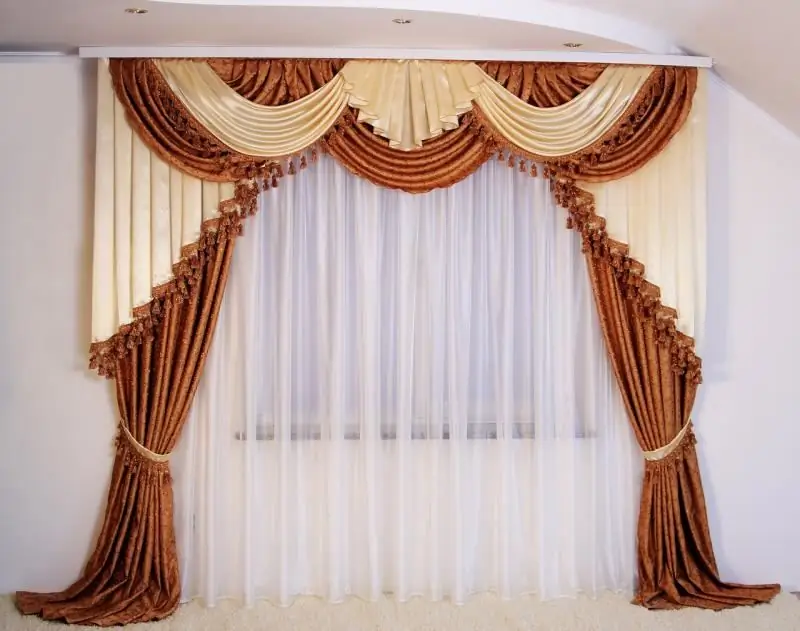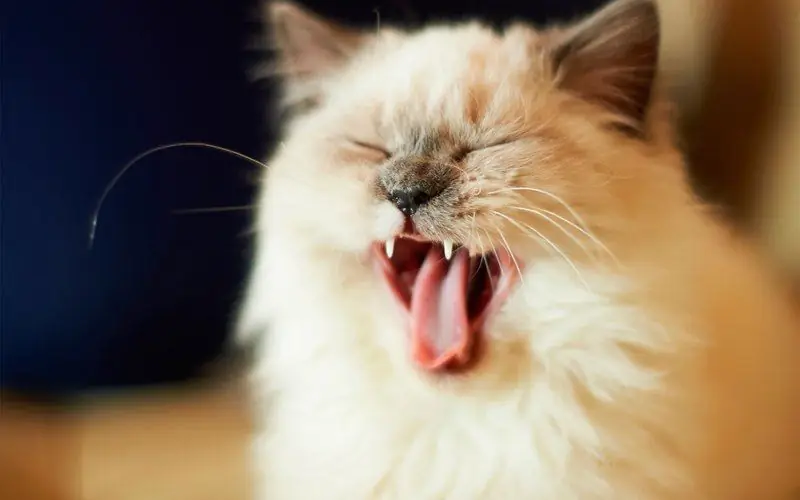
Table of contents:
- Author Bailey Albertson [email protected].
- Public 2023-12-17 12:53.
- Last modified 2025-06-01 07:32.
How to wash stretch ceilings at home: choosing a safe way

A brand new stretch ceiling will sooner or later be covered with dust, soot and soot from the kitchen stove and will lose its original appearance. Ceiling cleaning is not a pleasant experience. If you do not know what products to use and how to clean the surface without streaks, it becomes an impossible task that is postponed for a long time. And removing stubborn stains becomes difficult. However, in fact, the stretch ceiling does not require complex maintenance.
Content
- 1 How often should stretch ceilings be washed
-
2 How and what to wash stretch ceilings
2.1 Video: how to wash stretch ceilings with a washing vacuum cleaner and a steam generator
-
3 How to properly clean a stretch ceiling without streaks
- 3.1 Care of the foil ceiling
- 3.2 Care of the fabric ceiling
-
3.3 How to wash stains on the ceiling
3.3.1 Table: how to wash stains from PVC and fabric stretch ceilings
- 4 What not to do when cleaning stretch ceilings
How often do you need to wash stretch ceilings
High-quality stretch ceilings are treated with special compounds that repel dust and grease from the surface. But the canvas will still get dirty, especially in the kitchen. The hinged structure should be cleaned at least twice a year. Time the cleaning to coincide with the off-season cleaning to wipe the walls and windows at the same time. The first general cleaning is carried out 4-6 months after installation. If the room is being renovated, then after completion of the work, wipe the surface of the ceiling with a soft, dry cloth from construction dust.
Cleaning is done depending on the type of material. There are such types of ceilings as:
- Fabrics - made of natural or synthetic fabric. This surface is considered difficult to maintain, as the fabric turns yellow over time, quickly absorbs odors and dust.
- PVC - foil ceiling. Not so whimsical to care for, it is not afraid of water, does not absorb grease and dust.
During normal cleaning, it is enough to fan the ceiling with a soft cloth or walk on the surface with a vacuum cleaner. But if there are traces of old paint on it, rust from water leaks, then the fabric cloth will have to be painted or even completely replaced. However, before calling installers, it is worth trying a few folk tips that can return the ceiling to its original appearance.
It is believed that matte and satin PVC ceilings are the most unpretentious to maintain. Spills remain on the glossy coating after wet cleaning, it can be easily damaged by hot water and detergents.

It is easier to care for matte ceilings than for glossy ones, on which streaks may remain
How and with what to wash stretch ceilings
To quickly wipe dirt off the ceiling, use a mop with a mop attachment and telescopic handle. You don't have to climb a ladder and move it from corner to corner. The retractable handle will reach from the floor to distant corners, helping to wipe the tops of cabinets and walls. The tension surface is very sensitive to pressure, therefore, in order not to leave marks and scratches on it, use only soft fabrics that do not fade or lose pile.
Ideal for cleaning is microfiber, a modern, practical and soft material that perfectly absorbs water and collects dirt. A wide soft foam sponge is also useful, but not with an abrasive surface.

Prepare a soft cloth, sponge, mop and spray bottle for cleaning
All types of ceilings can be vacuum cleaned and cleaned with a steam generator. To vacuum the ceiling, attach the microfiber nozzle to the floor brush. It will not damage the surface and will collect dust.
For professional cleaning, a steam generator is often used, which will quickly clean up carbon deposits, soot and grease from the ceiling, returning the surface to its original cleanliness. From exposure to steam, the material sags, and then returns to its original state.
Video: how to wash stretch ceilings with a washing vacuum cleaner and a steam generator
The instructions for the ceiling always have a note on how to care for its material. But there are such tools that have already been tested by time and they can be used to clean the surface. The effectiveness of these formulations is confirmed by the reviews of satisfied housewives. It:
-
Professional means for cleaning ceilings EdelWeiss, Nouvel in sprays. They are easy to apply and are suitable for all materials.

The girl uses a spray to clean stretch ceilings When washing the ceiling, it is convenient to use a spray product
- Cleaning products from Faberlik, LOC from Amway, which deal with greasy stains without damaging the structure of the ceiling material. They are suitable for all types of tension structures.
- A soapy solution of white baby soap and dishwashing detergent will wash away stains from textile and PVC ceilings.
- An aqueous solution of ammonia copes well with dirt on film ceilings. It is included in most mirrors and glass products, so you can use them too.
Take note that in most cases, the use of household chemicals is not justified. If you periodically wipe the surface, then you will not need strong funds. If there are visible stains, it is recommended to check whether the composition is suitable for cleaning your ceiling. To do this, make a weakly concentrated solution, put it on a sponge and wipe the ceiling in the corner. If after a few minutes the product rinses off well and there is no visible damage on the surface, treat the remaining space.
How to properly clean a stretch ceiling without streaks
For dry cleaning of dust, a soft cloth is enough, but it is more convenient to do it with a vacuum cleaner. Turn it on at minimum power and, if there is no special nozzle, collect the dust, keeping the hose at a short distance from the ceiling. This prevents the thin coating from sucking inside the vacuum cleaner. First check how well the belt is fixed and taut.

Before starting wet cleaning, it is recommended to dry clean the ceiling with a vacuum cleaner
Vacuuming can be done before washing the ceiling. Wet cleaning is done in several steps:
- We clean the ceiling of dust.
- We apply a detergent, or better - soapy foam.
- We wash away dirt and soap.
- If stains remain, apply a special product and wash it off.
- Wipe dry.
Soap suds are less likely to stick into the surface and are easier to wash off. Therefore, do not use concentrated dishwashing detergents.
You need to wash the ceiling during the day, in natural light, so that there are no streaks from one corner to another. If you wash in a circular motion, streaks will surely remain.

When washing a stretch ceiling, cleaning should start from the corners
These are the main stages of cleaning, but depending on the type of material, there are some nuances.
Film ceiling care
PVC ceilings are most often chosen. They are produced with satin, matte and glossy surfaces. The latter are especially popular because they visually increase the space. But it is on them that all the stains after cleaning are clearly visible. To reduce them, use a 10% solution of ammonia. All smudges after washing are removed with a soft-bristled cloth. You can also use a detergent diluted in water. It will remove grease from the ceiling, and so that no stains remain, gently rub the film with a paper towel, which will restore its gloss.
Matte surfaces are easier to clean, and the traces of a rag are not so visible on them. Shake the soapy water into a lather and apply it to the ceiling, then rinse with warm water. Finally, wipe with a dry cloth. To clean, take a butterfly mop and wrap it with a soft cloth.
There are special sponges and polishes for PVC ceilings. These products are good because they almost do not leave streaks, unlike ordinary wet cleaning. Car polishes can be used to give the surface a shine and protect against stains and dust.
Tips for the care of the foil ceiling:
- Stains from film materials can be easily removed with a white rubber band.
- The grease is washed off with dish soap.
- Water-based paint will easily fall behind if you moisten it with warm water, leave it for a while and remove with a soft spatula.
- If an incision appears during cleaning, cover it with transparent tape, and then contact the ceiling repair service.
Fabric ceiling care
The textile surface creates comfort, but also requires more serious maintenance. If the film is easy to clean and not difficult to repair, then the fabric, especially the dyed one, requires more attention. Leaks on such ceilings leave dirty water stains that cannot be removed. The only way is to wash off any visible dirt and paint the fabric with water-based paint. Textile ceilings can be painted up to 10 times. You can remove other stains in the following ways:
- Polyurethane foam must be removed with special solvents, strictly following the instructions. Do not apply the product all over the stain at once. Treat a small area, and when it clears up, move on to the next. Then wash the area with soapy water.
- Greasy stains. Do not use hot water. Dilute the soap, let the water cool, and only then start cleaning. Do not press on the surface, it may tear and its elasticity is lower than that of PVC.
Textile ceilings must not be cleaned with glass cleaner or ammonia. Wash the canvas in a straight line. Although you can clean such a ceiling with a brush. Do not use a broom, which will not only scratch the fabric, but also leave particles of twigs on it.
How to wash the stains on the ceiling
The easiest way to remove stains from a stretch ceiling is with soapy water. She even copes with kitchen grime, which makes the canvas yellow.
Table: how to wash stains from PVC and fabric stretch ceilings
| Pollution type | Fabric | Pvc |
| Fat | Soap solution | |
| Soot | Steam cleaner | Steam cleaner / soap solution / ammonia solution |
| Cigarette smoke | Car interior cleaner | Soap solution / ammonia solution |
| Ketchup | Hydrogen peroxide solution (35-50 ml per 5 l of water) | |
| Paint | Soften with soapy water, remove with a spatula | |
| Marker | Weak alcohol / soap solution | |
| Flood stains | Paint over with water-based paint | Soda ash solution 5% |
| Glue "Cosmophen" | Dimexidum solution | |
| Champagne | Weak alcohol solution | Lather |
What not to do when cleaning stretch ceilings
In order for the ceiling to last as long as possible, use these tips:
- Do not use products based on acids and alkalis.
- Wear gloves and remove rings and bracelets to avoid damaging the canvas.
- Use only those compounds that are suitable for the type of your ceiling.
- Do not smoke in the room and ventilate the area regularly.

If you follow the recommendations for cleaning, the stretch ceiling will delight the owners with its impeccable condition for a long time
What definitely cannot be used when cleaning:
- Do not wash the ceiling with products containing abrasive particles: substances such as "Pemolux", dry soda and washing powder. They not only scratch the surface, but also penetrate the structure of the material, so they are difficult to wash off.
- Do not use alcohol on textile ceilings. They damage the antistatic coating.
- Rough brushes, scouring pads with a hard surface.
- Products containing dyes.
- Do not use acid and alkali. Even ordinary vinegar can ruin the surface hopelessly.
- Soap should be light, do not take dark laundry and tar - they will leave greasy traces.
- Chlorine is able to completely destroy the structure of the stretch fabric. Do not use it under any circumstances.
- It is forbidden to wipe off stains with solvents and acetone. These products are not suitable for PVC and will leave greasy stains on the textile flooring.
To keep the stretch ceiling in its original form as long as possible, use only mild compositions and care products designed specifically for this type of surface. Frequent cleaning of the stretch fabric is not necessary. It is enough to wipe it a couple of times a year with ordinary soapy water, and the ceiling will be as good as new.
Recommended:
How To Wash Curtains In A Washing Machine, Manually Or Clean Them Without Removing Them From The Eaves, Cleaning Features For Various Types Of Products

How to wash curtains: main stages and features. How to wash depending on material, construction and dirt. Other helpful tips
How To Clean Pearls At Home, Proper Care Of Products With Them (beads, Rings, Etc.)

Features and nuances of pearl care and cleaning. How to wear and store pearl jewelry
How And What To Wash A Stretch Glossy Ceiling Without Streaks, How To Care + Video

How to properly wash stretch ceilings, what means it is fashionable to use for this. Maintenance rules for such ceilings
How Many Teeth An Adult Cat And A Cat Have, How To Clean Them At Home, Including How To Clean Them From Tartar Formation

Milk and molar teeth in cats, how many there are. How to brush your cat's teeth. Brushes and toothpastes for cats. Causes of tartar. Cleaning the oral cavity from the stone
How To Clean The Ears Of A Cat Or A Cat At Home, Than To Clean Them For An Adult Animal Or Kitten For Preventive And Therapeutic Purposes

Causes of ear contamination in cats. Common ear diseases, what care products to use, how to protect yourself from a cat while cleaning your ears
